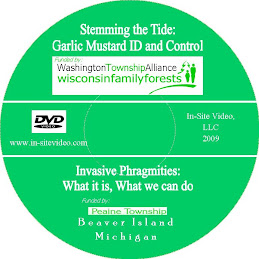I was out pulling yesterday with some landowners, and noticed that gm already has seed pods (a bit early due to a lot of rain?). In the past I have stopped pulling as I saw the pods develop, but learned last year from my partner, that we could have gone on longer, until the pods were brown and dry. I just wonder when to stop. The pods are green, turning brown, but not dry so not breaking open to drop seeds yet.
However, there are some folks up here who would like to earn some money pulling and at this point, I am concerned about letting them start as I believe it might be too close to seed drop.
We would like to give this matter careful treatment in the film. Can anyone give a fairly definitive answer to when it is time to get out of the infestation so as not to inadvertently spread it?
Subscribe to:
Post Comments (Atom)

2 comments:
From Kelly Kearns, Wisconsin DNR
It is going to be site and year dependent. If the oldest pods are turning brown, seeds will be dropping soon. If the oldest pods are already split, seeds are on the ground.
Thank you, Bob, for sending our query on to Kelly.
From Bob Bultman, Coordinator,
Door County (Wisconsin) Invasive Species Team
(Because of the longevity of seeds, any time you step in GM territory you have a chance of spreading it by tracking soil contaminated with the tiny seeds.)
I have not stepped into a patch in a week, but i think you still have time to be bagging the stuff up. This is an observational and experimental process. Once seeds are observed dropping (ideally just about to), it time to quit pulling - or move to a cooler, damper patch that hasn't quite ripened yet. (Check the sunny drier patches first and gauge the ripenning progress).
Regardless of timing, make sure everyone involved knows the dire risk of seed transport - both old seeds in the soil and new drops. Clean practices are very important. Thoroughly brush off clothing, pant cuffs, boot creases and soles. etc. -- every time you pull or enter an infested area -- whether its early in the season or on a muddy day in fall. ( maybe we should make big scary 'quarantined area' or 'bio-security zone' signs like they do at factory farms and feed lots for preventing import of bovine diseases. That might get peoples' attention).
Post a Comment